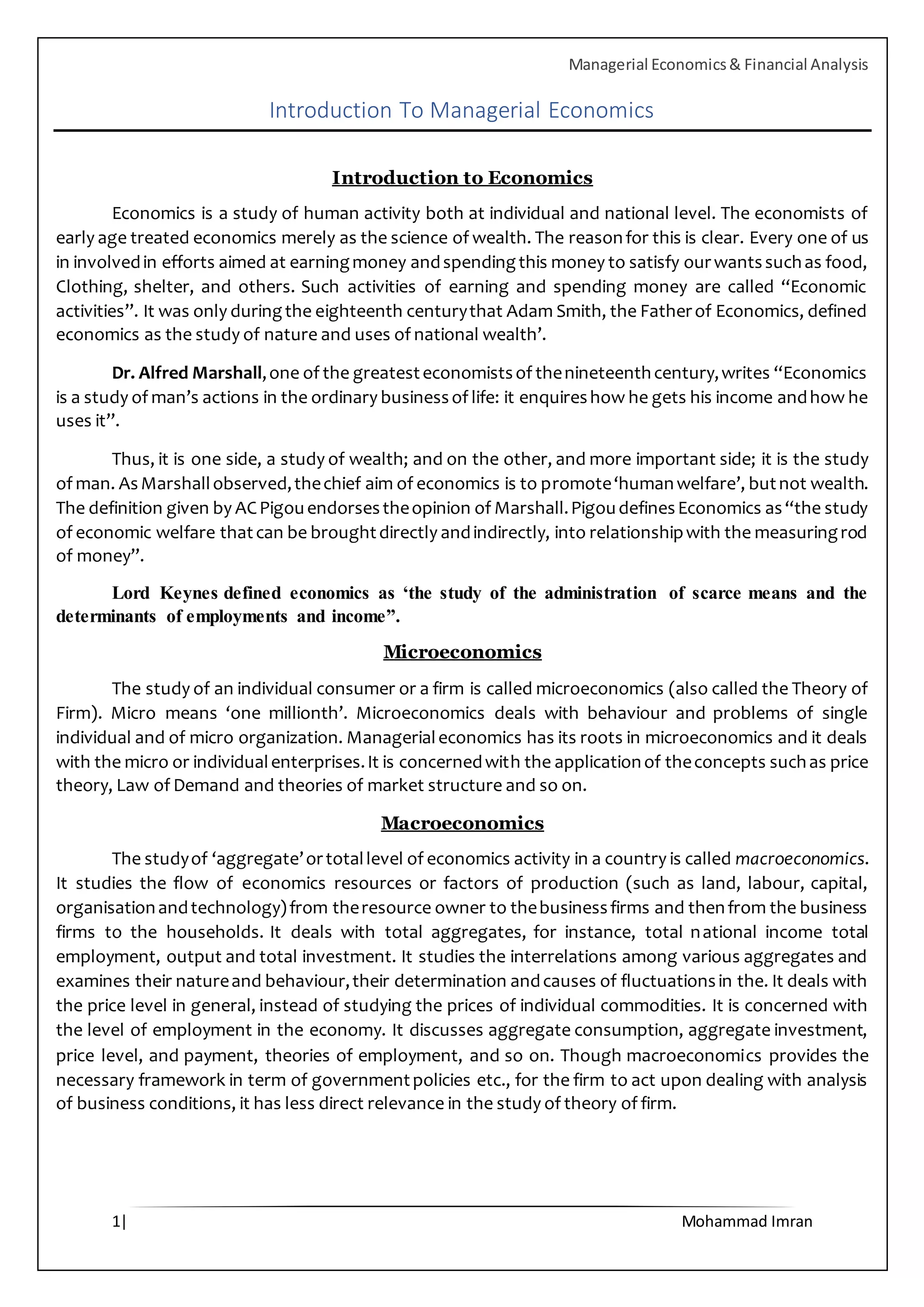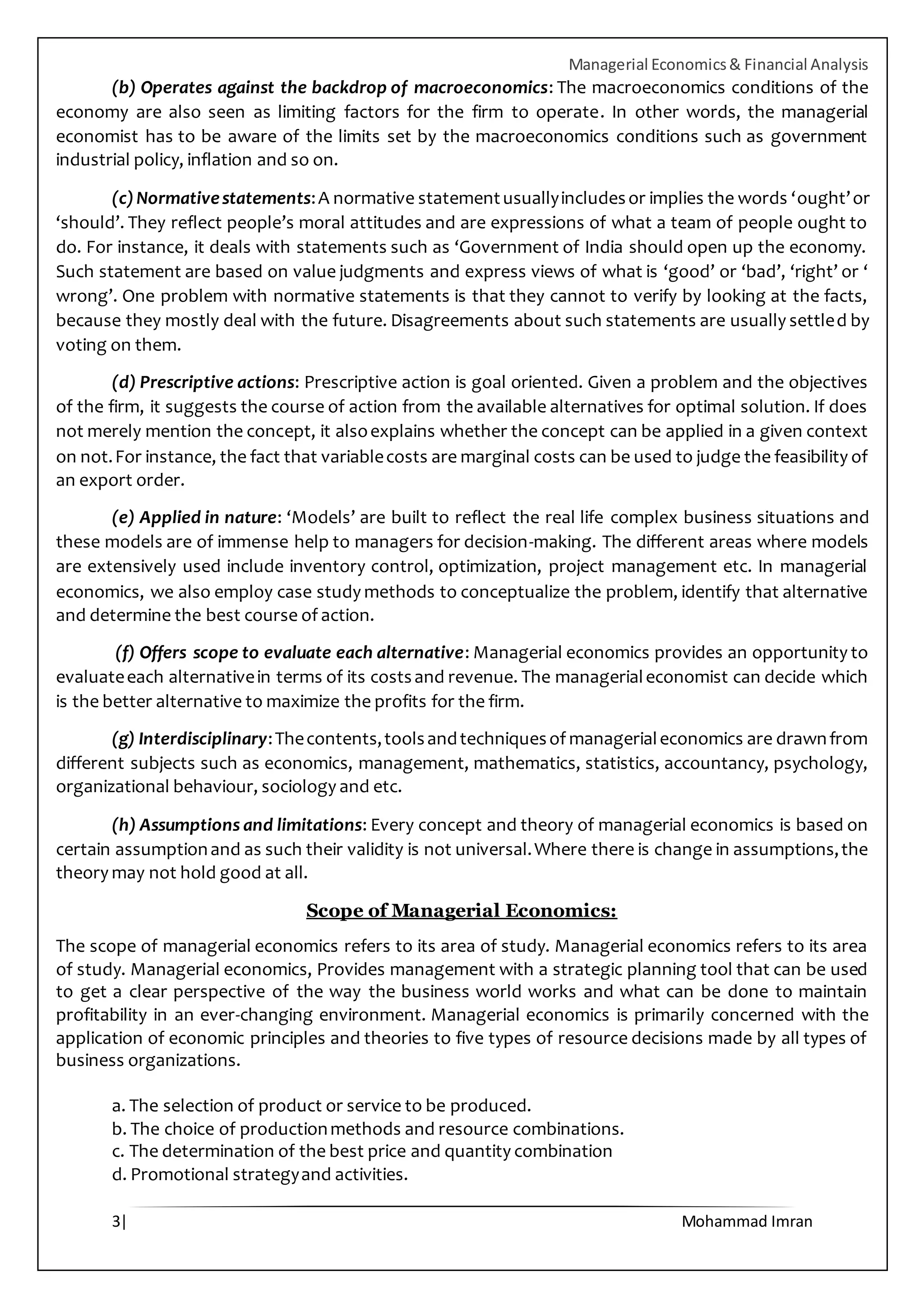This document provides an introduction to managerial economics. It defines economics as the study of human economic activity and wealth. It discusses microeconomics as the study of individual consumers and firms, and macroeconomics as the study of aggregate economic activity in a country. Managerial economics bridges traditional economics theory and real business practices by providing tools to help managers make competent decisions. It operates within the constraints of macroeconomic conditions and suggests prescriptive actions to optimally solve problems given a firm's objectives. The scope of managerial economics includes decisions around product selection, production methods, pricing, promotion, and location from an operational and environmental perspective.




